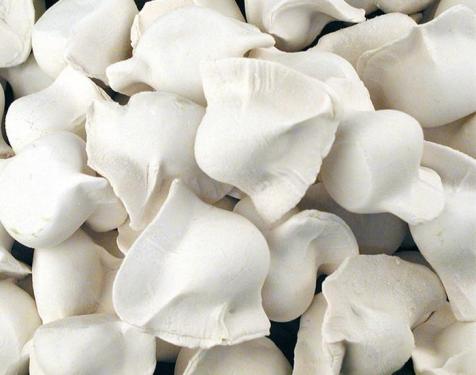 When the two famous brands of quick-frozen foods recently detected Staphylococcus aureus (hereinafter referred to as "S. aureus") and became trapped in the cusp, the Ministry of Health is soliciting opinions on the "new national standard" of frozen foods. Can not be detected" can be limited to check out.
When the two famous brands of quick-frozen foods recently detected Staphylococcus aureus (hereinafter referred to as "S. aureus") and became trapped in the cusp, the Ministry of Health is soliciting opinions on the "new national standard" of frozen foods. Can not be detected" can be limited to check out. China's current "quick-frozen pre-packaged rice food hygiene standards" provides that Staphylococcus aureus and other pathogens can not be detected. The Ministry of Health announced in September this year the National Standard for Food Safety of Quick-freezed Rice Products (Draft for Soliciting Opinions). That is, up to a maximum of 1 sample per gram of raw product can be detected in a maximum of 10,000 S. aureus strains of the 5 samples sampled for each batch of product.
In today's increasingly stringent industrial standards, China's tolerance of S. aureus has caused the market to question the new national standard. The reporter found that after comparing similar foreign regulations, apart from individual foods, the international community also allowed the detection of a small amount of Staphylococcus aureus in food. Therefore, in this sense, the new national standard has not been reversing.
Contrast with the detection of S. aureus in foreign countries
Due to differences in eating habits, there are very few foreign standards that specifically address the requirements of quick-frozen foods. However, with reference to the requirements of other foods related to S. aureus, it can be seen that foreign standards are also based on "quantitative", that is, allowing a small amount of detection, but there are strict requirements on the number of detected bacteria.
The FDA's regulations for S. aureus in frozen foods also allow detection. If raw shrimp is allowed to detect no more than 100 bacteria per gram, other aquatic products are allowed to detect 10,000 bacteria per gram. Some states have stricter standards, such as Nebraska’s prohibition of detection of this flora in oysters, clams, and seafood cooked foods.
Japan’s regulations are relatively loose, and S. aureus in meat products must not exceed 1,000 bacteria per gram. In frozen foods, the content of aerobic microorganisms (including S. aureus) is up to 3 million bacteria per gram. Frozen shellfish food must not exceed 100,000 bacteria per gram.
The International Food Safety Commission (ICMSF) promulgated the "Microbiological Limitation Regulations for Foods," which contains slightly more criteria for S. aureus. Fast-frozen instant baked foods are stipulated to be detectable with a quality of 100 bacteria per gram or less, and 10,000 or more are exceeded.
The limits of S. aureus in other crabmeat, cheese, and cereal products are also between 100 and 10,000 bacterial groups, with the exception of dry foods for infants. The standard is not to exceed 100 bacteria per gram, 10 per gram. The following bacteria are good quality.
The European Union has the most stringent requirements for S. aureus, but the European Union's regulations are for cheese and milk powder products, and it is required that no S. aureus be detected in 25 grams of samples. This is not the case for other foods.
Historical review of the US and Japan’s standard loose regulation is not soft
On the surface, foreign standards are looser than China's current national standards, but relatively loose standards do not imply strict supervision.
In June of this year, the US FDA recalled a cheese product produced by a company due to the excess of S. aureus. In recent years, the well-known recall incident caused by the violation of Staphylococcus aureus was the Japanese “Snow Milk Powder†incident.
In 2000, three types of milk products such as milk powder, low-fat milk, and yoghurt from Japan Snow Printing Company were found to have exceeded the level of Staphylococcus aureus toxin, causing 15,000 consumers to become poisoned. All products were forced to recall.
Since then, nearly 10,000 food supermarkets in Japan have refused to sell low-fat milk produced at the “Snow Print†Osaka factory, which in turn has caused the market share of “Snow India Dairy Company†to drop steeply from the top spot to the third place. Openly apologize and resign.
S.aureus
Staphylococcus aureus is the most common pathogen in purulent infection. It can cause local purulent infection, pneumonia, pericarditis, and even systemic infections such as sepsis and sepsis. According to the statistics of the US Center for Disease Control and Prevention, the infection caused by S. aureus is second only to E. coli.
Staphylococcus aureus is a worldwide health problem. Food poisoning in the United States accounts for 33% of bacterial food poisoning, and Canada's share is as high as 45%.
Although the “killing power†of S. aureus is not small, it is not difficult to kill. In the high temperature of 80° C., heating for 30 minutes can kill. For frozen foods, as long as boiled (or steamed) cooked, S. aureus can be killed, will not cause direct harm to human health.
Lactic Acid,Biodegradable Lactic Acid,Lactic Acid Liquid,Poly Lactic Acid
SHANDONG BAISHENG BIOTECHNOLOGY COM , https://www.baishengbioproducts.com